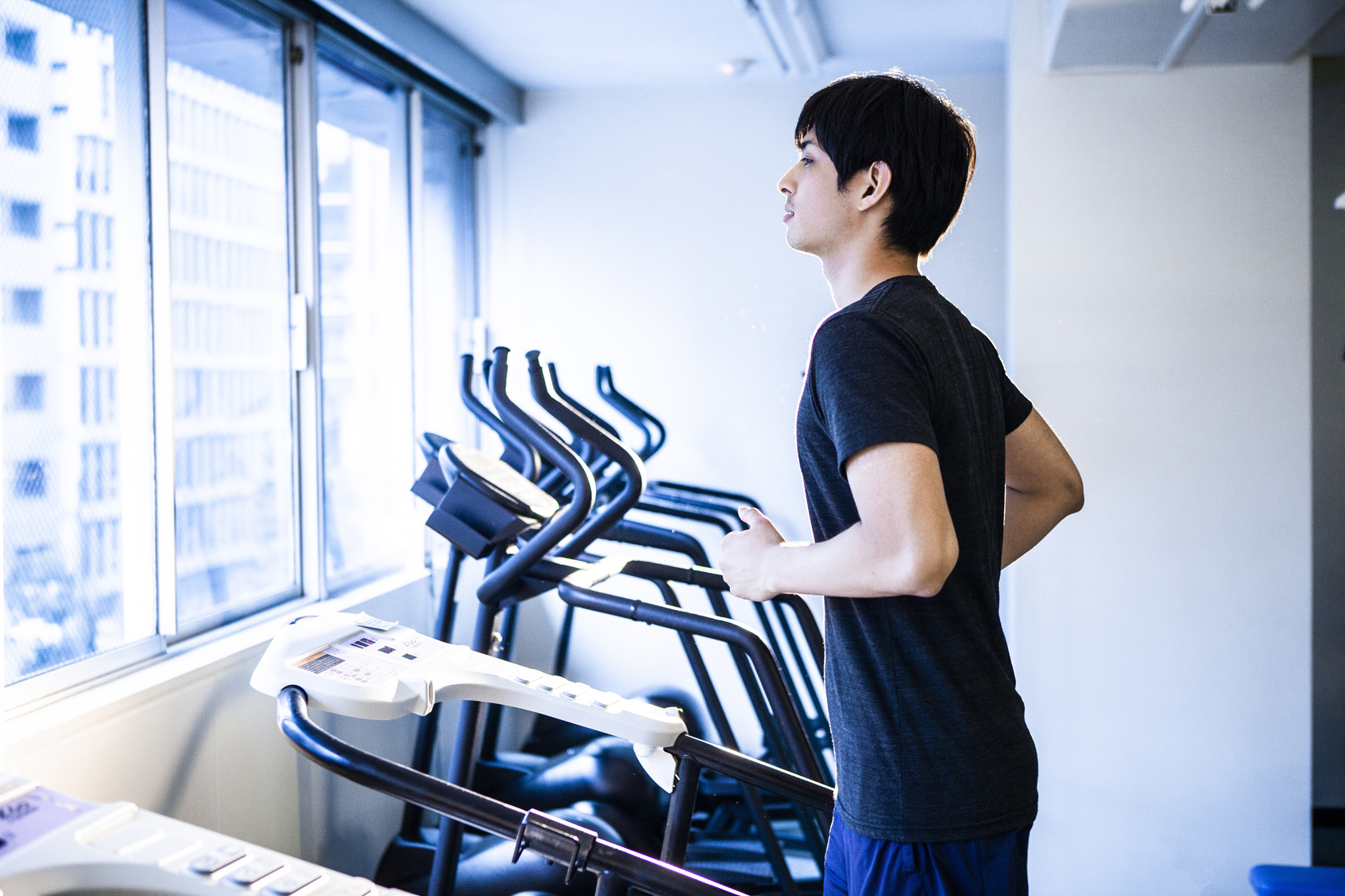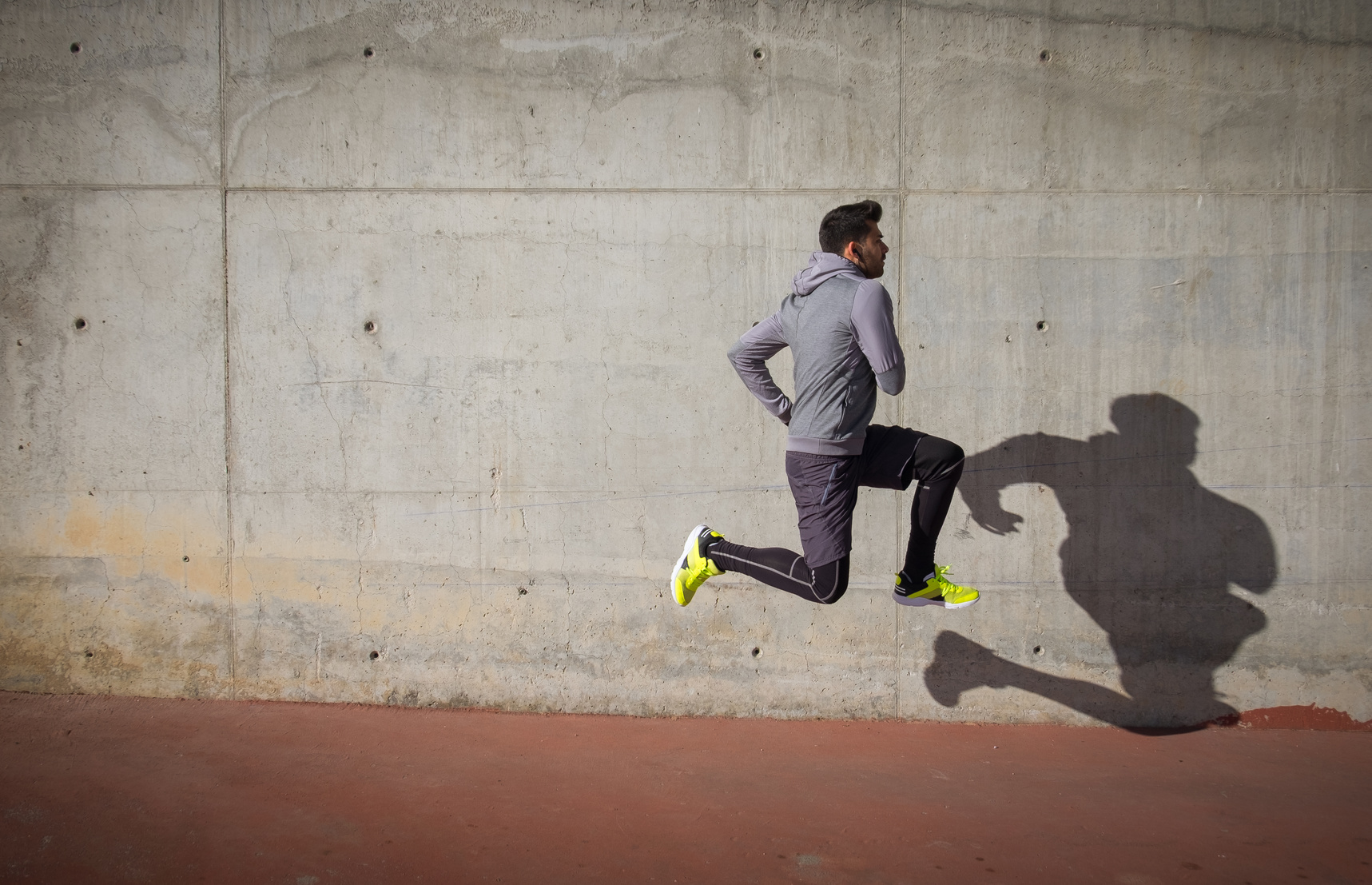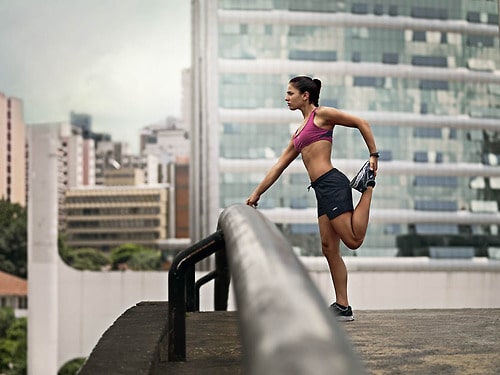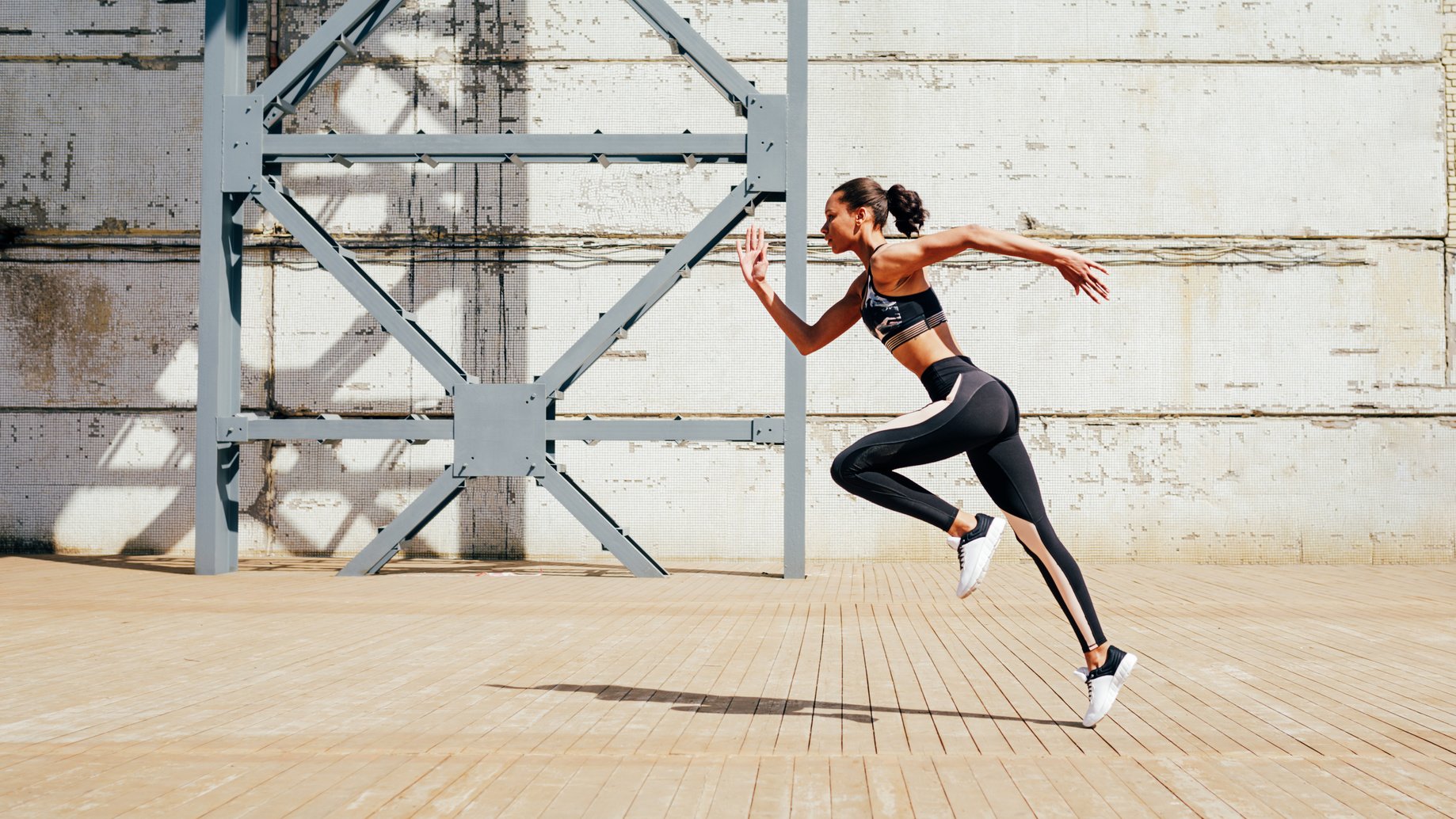Running is like a magic elixir for your fitness and overall well-being. It torches calories, toughens up those joints, keeps the crazies at bay, grants you sweet dreams, and turns you into a lean, mean machine.
But here’s the kicker – it may look like the simplest sport on Earth, but trust me, it’s a minefield of mistakes waiting to happen. Whether you’re just starting or you’ve logged more miles than you can count, chances are you’ve stumbled into a few (or all) of the 16 blunders we’re about to uncover.
Now, don’t sweat it. We’ve all been there, and mistakes are just stepping stones to greatness. The good news? Most of these slip-ups are a piece of cake to fix.
So, if you’re itching to upgrade your running game and sidestep these pitfalls, you’ve landed in the right spot. Buckle up as I dive into the 16 running mishaps you should steer clear of and, of course, what you should be doing instead!”
Running Mistake #1: Not Having a Plan
Having a structured running plan is a game-changer. It provides you with direction, purpose, and a roadmap to reach your running goals. Whether you’re a newbie aiming for your first 5K or a seasoned runner eyeing that sub-3-hour marathon, there’s a plan tailored just for you.
The Solution
Take the time to research and choose a plan that aligns with your current abilities and aspirations. It’s all about finding the right fit. Remember, even a basic plan jotted down on a piece of paper is better than no plan at all
Setting clear intentions and goals is essential. It helps you stay on track, prevents you from skipping crucial workouts, and ensures that you prioritize recovery. So, whether you’re aiming for a specific time or simply looking to enjoy your runs more, having a plan will get you there more efficiently.
As the saying goes, “The devil is in the details.” So, write down your running plan. It could be as straightforward as, “Today, I’ll complete ten sprints at 90 percent of my maximum speed.” This simple act can make a world of difference in keeping you accountable and focused on your journey.
Have no idea how to create your own plan?
Here’s how to design a running program.
A beginner?
Try the following schedules:
Running Mistake #2: Overdoing It
Many runners, especially those new to the sport, are so enthusiastic that they want to run every single day. They dive headfirst into their training, thinking more is better.
But guess what?
This approach often leads to overtraining, a dreadful condition that brings a laundry list of problems like chronic soreness, injuries, weakened immunity, mood swings, and a loss of motivation. It’s a vicious cycle that doesn’t get you anywhere worth going.
The Solution
So, how do you avoid this pitfall? Let’s dive into some solutions:
- Rest Days: It might sound counterintuitive, but rest days are a runner’s best friend. Following a hard run, give yourself a day off to recover. Your body will thank you.
- Scheduled Recovery: Plan recovery weeks into your training schedule. Every fourth or fifth week, reduce your mileage by 40 to 60 percent. It’s like hitting the reset button for your body.
- Cross-Train: Rest doesn’t always mean sitting on the couch. Engage in active recovery through activities like walking, swimming, biking, or yoga. These options provide the perfect balance for cardio-heavy running
- The 10 Percent Rule: Avoid making the common mistake of increasing your weekly mileage by more than 10 percent from one week to the next. Slow and steady wins the race, as they say.
- Listen to Your Body: Your body is a fantastic communicator if you’re willing to listen. Watch for signs of overtraining, such as an elevated heart rate, persistent fatigue, and unrelenting soreness.
Running Mistake #3: Eating A Big Meal Before A run
Eating a hefty meal right before a run might sound like a good idea, but it’s a classic example of how good intentions can lead to not-so-great outcomes. You see, as a runner, you undoubtedly need a substantial amount of calories to fuel your miles.
However, chowing down on a massive plate of potatoes and eggs, even though it’s packed with nutrients, can make your run feel like a stomach-churning rollercoaster.
The truth is, consuming too much food, especially the wrong types, too close to your run can spell disaster.
You might find yourself grappling with side stitches, stomach pain, cramps, GI distress, nausea, or worst of all, an impromptu roadside regurgitation session. None of these scenarios align with your running goals, right?
The Solution
So, how do you make sure you’re well-fueled without inviting digestive turmoil? Here are some solutions:
- Time Your Meals: Give your digestive system the courtesy of time – at least 2 to 3 hours – to process your meal before you hit the pavement. This buffer helps avoid those uncomfortable GI issues during your run.
- Keep it Simple and Healthy: Opt for meals that strike a balance between moderate carb content and lean protein. This combination provides sustained energy without weighing you down.
- Dodge the Dietary Landmines: Steer clear of fatty, fried foods and sugary items. While soda might be a tasty treat, it’s a big no-no for running, as it can lead to burping galore or uncomfortable bloating.
Running Mistake #4: Not Drinking Water/or Too Much of It
When you’re running or engaging in any form of physical activity, you’re bound to lose a significant amount of water through sweat, which can quickly lead to dehydration if you’re not careful. Dehydration is a real buzzkill, as it can hamper your training performance and overall enjoyment of your run.
But here’s the twist – chugging a gallon of water isn’t the magic solution. In fact, it can mess with your electrolyte balance.
The result? Hyponatremia is a condition that can lead to unpleasant symptoms like nausea, cramps, and vomiting, and in extreme cases, it can even be life-threatening.
The Solution
So, what’s the secret to hydration success?
Well, it’s a bit of a moving target, depending on various factors like the intensity of your training, your fitness level, the weather, what you’re wearing, and how much you sweat. But here’s a rule of thumb: aim to drink an amount of water equivalent to your body weight in ounces each day on hotter days or before long and demanding training sessions, up your fluid intake.
And here’s a nifty trick to gauge your hydration levels: keep an eye on the color of your pee.
If it’s a very light yellow, congratulations, you’re likely well-hydrated.
However, if it starts to resemble the color of a deep amber ale and comes with a less-than-pleasant odor, it’s your body’s way of saying, “Hey, buddy, drink up!”
Running Mistake #5: Refueling Badly
It’s a common conundrum for runners: you’ve just wrapped up a grueling run, and the last thing you want to do is eat. Your appetite seems to vanish, and you’d rather collapse on the couch than even think about food. Turns out, you’re not alone in this.
Researchers from Brigham Young University have discovered that intense training can actually put the brakes on your hunger.
But here’s the rub: your body is primed to soak up nutrients like a sponge immediately after a workout. This is when it’s most efficient at using carbohydrates and protein to rebuild and refuel your muscles. Skip that post-run meal, and you’re doing yourself a disservice.
The Solution
Here are a few key strategies:
- Measure your intake: Calculate how many calories you’ve burned during your run using a calorie calculator based on your activity level. This will give you a ballpark figure of how much you need to refuel.
- Refuel immediately: After a tough run, reach for a snack that’s high in carbohydrates and moderate in protein. It’s the perfect combination to kickstart your recovery. Think about options like a banana with almond butter, Greek yogurt with berries, or a turkey and avocado sandwich on whole-grain bread.
- Eat a balanced diet: In general, focus on meals that are rich in complex carbohydrates, vegetables, lean proteins, and healthy fats. This will provide your body with the nutrients it needs for peak performance and recovery.
- Consider a protein shake: If you’re too wiped out or just not in the mood for a full meal after a hard workout, a protein shake can be a convenient option. Many of these shakes are designed to enhance your recovery and prevent muscle loss.
Running Mistake #6: Static Stretching Before a Run
Imagine this: you’re about to embark on a run, and you want to make sure your body is primed and ready for the journey ahead. Your first instinct might be to ease into it with some good old-fashioned static stretching. After all, it’s a tried-and-true method for improving flexibility and preventing injury, right? Well, not so fast.
The truth is static stretching before a run can actually be counterproductive. Instead of setting you up for success, it might increase your risk of injury and even limit your performance. But don’t just take my word for it – science is in agreement.
According to a study published in the Journal of Strength and Conditioning Research, holding a stretch for an extended period before running can sedate your nervous system, leaving you feeling sluggish and less prepared for the demands of your run. What’s more, your muscles are more susceptible to tears or strains when they’re not adequately primed.
The Solution
The key is to warm up with dynamic stretching exercises before your run and save static stretching for your post-run routine. Dynamic stretches are aptly named because they prepare your body for action. They increase your joints’ range of motion and activate your muscles, getting you ready to tackle your run head-on.
Running Mistake #7: Skipping Post-Run Stretching
Let’s talk about post-run stretching, a practice that remains a topic of debate among runners.
Some may question its importance, but I firmly believe in its benefits for injury prevention, flexibility improvement, enhanced range of motion, and stress relief.
The Solution
Here’s what you should consider:
- Timing is Everything: The prime time for stretching is after your run when your muscles are warm and receptive. Alternatively, you can incorporate stretching into your routine after a light warm-up.
- Consistency is Key: Make stretching a consistent habit in your training plan. It should become as integral as your runs themselves.
- Hold Those Stretches: When you stretch, hold each position for at least 30 to 45 seconds. This duration allows for increased blood flow and a more effective stretch.
- Variety is the Spice of Life: Explore different stretching routines to find one that resonates with you. There are plenty of options available, including routines you can find on my blog.
Running Mistake #8: Bad Running Form
Let’s talk about a critical aspect of running that’s often overlooked: running form. Some might believe that form only matters in weightlifting, but that couldn’t be further from the truth. In reality, your running technique can make or break your entire running experience.
So why is running form so important?
First and foremost, ignoring proper form can lead to injuries and wasted time. Who wants that? Mastery of correct technique is the quickest way to reach your running goals.
It minimizes muscle soreness, reduces the risk of injury, and helps you make the most out of every session.
Remember, quality always trumps quantity. While our bodies are designed for running, that doesn’t mean that proper form comes automatically. Many of us lead sedentary lives, which can contribute to poor running form, being one of the most common mistakes among recreational runners.
The Solution
Let’s look at some universal guidelines for proper running form:
- Mind Your Upper Body: Maintain an upright posture with a slight forward lean. This aligns your body correctly for efficient running.
- Create Flow: Your arms should move forward and backward in sync with your lower body’s motion. This rhythmic movement helps you maintain balance and momentum.
- Stay Relaxed: Keep your entire body relaxed, including your face, shoulders, and hands. If you feel tension or heaviness in your shoulders during the arm swing, it’s a sign that something is amiss.
- Seek Help: Don’t hesitate to schedule a few sessions with a professional running coach or take a class to address any bad form habits and learn proper techniques.
Running Mistake #9: Hard Runs in New Shoes
Ah, the excitement of new running shoes! It’s tempting to lace them up and hit the road right away, but that enthusiasm can lead to some painful consequences, especially if the shoes aren’t properly broken in.
Even the best-running shoes can cause discomfort, blisters, and arch pain until they’ve been worn in.
The Solution
Don’t rush into those brand-new shoes for a hard run. Instead, take your time to break them in. Start by wearing them around your house, while working, or during errands around town. This allows your feet to get accustomed to the new shoe’s feel.
Once you’ve spent some time in them and they feel more comfortable, start gradually testing them out on your runs. Begin with shorter distances and progressively increase the mileage as your shoes mold to your feet.
This principle also applies to other running gear, like socks, shorts, or sports bras. Breaking them in gradually ensures that you’re ready for longer runs without encountering any major issues.
Running Mistake #10: Ignoring Recovery
Recovery, recovery, recovery! It’s a vital part of your running routine that’s often pushed to the back burner, but doing so can have significant downsides.
Neglecting proper recovery can hinder your training progress and set the stage for injuries and burnout. Your muscles need downtime to rebuild and repair the micro-traumas caused by the stress of exercise.
The Solution
Treat recovery as an essential part of your running plan. Just like you schedule your workouts, schedule your rest days, too, especially between hard workouts. These rest days give your body the chance to heal and rejuvenate.
Consider planning a recovery week every three to five weeks. During this time, reduce your training volume significantly or even take a break from running altogether. It’s an excellent way to prevent overtraining and allow your body to bounce back stronger.
Running Mistake #11: Not Getting Enough Sleep
Skimping on sleep is a recipe for disaster.
In fact, it’s not just bad; it can be even more dangerous than overtraining. Sleep deprivation messes with your alertness, wrecks your mood, and throws your hormones out of balance. On the flip side, proper sleep is like a magical elixir for your muscles’ recovery.
The Solution
Well, here are some steps to help you catch those essential Zzz’s:
- Keep track: Start by logging your sleep time in your workout diary. This will help you identify patterns and understand your unique sleep needs.
- Find your sleep range: Research suggests that most people need between seven and nine hours of uninterrupted sleep each night. Some lucky folks can thrive on less, but that’s not common. Your goal is to figure out what amount leaves you feeling refreshed and ready to tackle your runs.
- Go to bed early: You’ve probably heard the saying, “The early bird gets the worm.” Well, for runners, it’s more like, “The early bird gets the PR!” Going to bed earlier can make a world of difference in your sleep quality and overall performance.
Running Mistake #12: Unrealistic Expectations
Expecting to lose 30 pounds in a month, gain 10 pounds of muscle, and run a sub-3-hour marathon in less than three months? Hold on a second! Let’s talk about setting some more realistic expectations.
Chasing after these kinds of unrealistic goals is like sprinting toward burnout. In fact, it’s your own excuses that can become your biggest obstacle, not to mention the potential for injury and pain if you push too hard
The Solution
Well, it’s all about understanding that fitness progress is a slow and steady journey, not a lightning-fast race. Instead of aiming for those grandiose goals, try these steps:
- Set small, achievable goals: Break down your larger objectives into smaller, manageable milestones. This makes your progress more tangible and satisfying.
- Keep a diary or logbook: Document your workouts, diet, and how you’re feeling. Having a record helps you see your improvements over time.
- Exercise within your capabilities: It’s easy to get caught up in other people’s success stories, but remember that your fitness journey is unique to you. Focus on your own progress and growth.
Running Mistake #13: Doubt Yourself
Doubt – it’s that sneaky little monster that creeps into the minds of even the most seasoned runners.
We all wonder if we’re making progress or if we’ll perform at our best today.
But here’s the kicker – if you start your run with doubt as your co-pilot, it’ll show, and your performance might just take a nosedive.
Negative thoughts?
They’re like rocket fuel for self-doubt, and once that cycle starts, it’s tough to break. So, even if you’ve got the fanciest gear, aced your warm-up, and fueled up just right, if your mind isn’t in the game, you won’t get far.
The Solution
Mental prep, my friends. Instead of letting those doubts set up camp in your head, focus on the positive – even if you’re just starting out. Visualize yourself crushing it because, as I always say, where the mind goes, the body follows. The rest? Well, that’s up to you.
Running Mistake #14: Ignoring Cross-Training
Just because you’re a die-hard runner doesn’t mean you should turn your nose up at other workout routines. In fact, what you do on your non-running days can make or break your progress.
Think of it as the secret sauce that complements your running.
Here’s the scoop: incorporating low-impact, moderate-intensity cross-training workouts into your routine can do wonders. It’s like your little boost towards reaching your running goals without pushing your body to the brink.
The Solution
Simple. Set aside time for at least two to three cross-training sessions every week. Options are aplenty – you could hop on a bike, take a dip in the pool, glide on an elliptical, explore water running, or even zen out with yoga. But here’s the kicker – don’t skimp on strength training. It’s a game-changer.
Running Mistake #15: Wrong Shoes
Hands down, this is the numero uno mistake that runners, especially newbies, commit.
It’s so big that it inspired me to create this comprehensive list of running blunders.
Here’s the deal: when it comes to running, shoes matter – a lot.
Let’s talk straight. Whether you’re wearing shoes that have seen better days or they just aren’t the right match for your feet, your running journey can turn into a painful misadventure, and injuries might just be lurking around the corner.
The Solution
Invest your time in a trip to a specialized running store. These folks are the experts; they’ll examine your foot type, your running style, and what you need in a running shoe. Then, they’ll handpick the perfect pair for you.
Now, here’s a pro tip – choose comfort over style. Running shoes are your performance tool, not a fashion statement. Make sure you’ve got some wiggle room in the toe box, enough to freely wiggle those toes. Leave at least a finger’s width for a cozy fit.
Running Mistake #16: Wrong Clothes
Running seems like the simplest sport out there – put on some shoes, and you’re off. But let’s peel back the curtain on a hidden secret: to be your best running self, you need the right threads.
Here’s the scoop: wearing the wrong running gear can turn your jog into a cringe-worthy experience, exposing you to discomfort and even weather-related issues. Trust me; you don’t want to go down that road.
The Solution
Well, it’s not rocket science. Just say no to cotton – seriously, it’s a trap. Once it gets wet, it stays wet, which means you’ll be freezing in the cold and chafing in the heat. Nightmare, right?
Instead, opt for high-performance fabrics like DryFit, Thermax, CoolMax, Thinsulate, or polypropylene. These champs will wick away moisture, keeping you dry and comfy throughout your run.
When it’s cold out there, don’t overdo it. The layering trick works like magic. Dress as if it’s 10 to 15 degrees warmer than it actually is – that’s the sweet spot. Keep it streamlined, though; you don’t want to turn into a human parachute.













